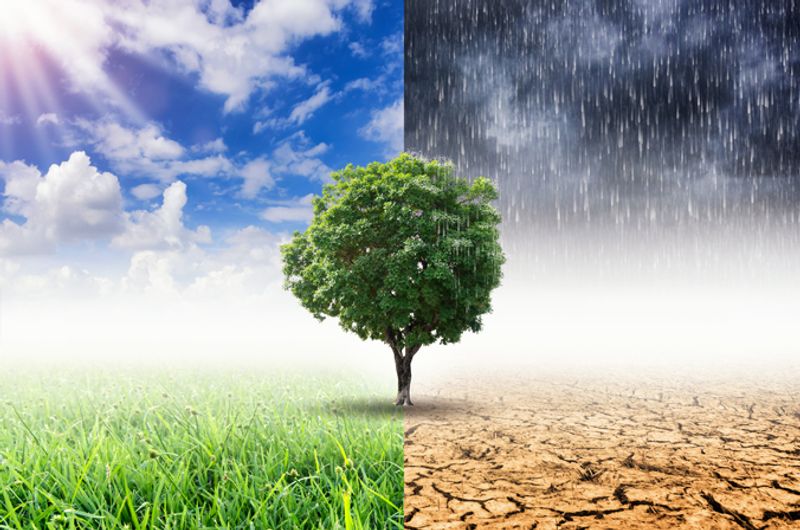We all can — and should — do something about global warming
What are you going to do about global warming?
To answer that question, one has to differentiate global warming from climate change and weather.

Image: Adobe Stock
Weather is related to conditions in the atmosphere that occur over short periods of time. Examples are winds, floods, thunderstorms, etc.
Climate refers to the long-term regional or global average of temperature, humidity and rainfall patterns over seasons, years or decades. Climate change has caused increased heat, drought and insect outbreaks. In turn, these changes have made wildfires more numerous and severe. If you don’t believe me, talk to people living in California.

Global warming refers to the long-term heating of the surface of the Earth since the preindustrial era secondary to activities of humans. These activities include fossil fuel burning, which increases heat trapping greenhouse gas levels in the Earth’s atmosphere.
The primary cause of global warming is human activity that releases carbon into the atmosphere. Examples are burning fuels to drive cars, generate electricity and operate our homes and businesses. Tropical deforestation by humans is another major contributor.
How long do we have?
Scientists have concluded that we must limit global warming to 1.5°C by 2040 if we are to avoid a future in which daily life throughout the world is marked by devastating effects of extreme droughts, wildfires, floods, tropical storms and other disasters.
Actually, it seems like we are facing that now.
It’s also devastating to know that more intense drought, heat waves, rising sea levels and melting glaciers with warming oceans can directly harm animals, destroy the places they live and create havoc on people’s livelihoods and their communities.
Glaciers are shrinking. The average thickness of 30 well-studied glaciers has decreased more than 60 feet since 1980. It seems that protecting our forests like the Amazon and our oceans are solutions that will work. That protection is critical since sea-level rise can also lead to coastal erosion and tidal flooding. Look at what happened in Florida as a result of Hurricane Nicole in November. Some communities are projected to possibly end up at or below sea level by 2100 and will face decisions around managed retreat and climate adaptation.
Yet, progress doesn’t seem fast enough. Scientists say conservation, restoration and improved land management in order to increase carbon storage or avoid greenhouse gas emissions worldwide would move us in the right direction.
How can we help?
As individuals, we can help. Drive less, recycle more, avoid products with a lot of packaging and adjust your thermostat. These simple activities don’t require a lot of energy and time.
Walk, bike, carpool or take mass transit more often. It has been stated that you will save 1 pound of carbon dioxide for every mile you don’t drive.
You can also save 2,400 pounds of carbon dioxide per year by recycling just half of your household waste.
It also takes a lot of energy to heat water. So use less hot water by taking shorter and cooler showers and washing your clothes in cold or warm instead of the hot water. This will lead to more than 500 pounds of carbon dioxide saved per year.
Turning off your television, stereo and computer when you’re not using them will save thousands of pounds of carbon dioxide a year. Believe it or not, a single tree will absorb 1 ton of carbon dioxide over its lifetime. I get that planting a tree is tough for us to do in our profession. But why not get your kids to get off their gluteus, turn off their computer and plant a tree?
When I leave work today, I am going to check the air in my tires. Keeping your tires inflated properly can improve your gas mileage by more than 3%. Every gallon of gasoline saved keeps 20 pounds of carbon dioxide out of the atmosphere. Even better, I am going to look at electric cars this weekend.
Stay safe.
For more information:
Nicholas J. Petrelli, MD, FACS, is Bank of America endowed medical director of ChristianaCare’s Helen F. Graham Cancer Center & Research Institute and associate director of translational research at Wistar Cancer Institute. He also serves as Associate Editor of Surgical Oncology for HemOnc Today. He can be reached at npetrelli@christianacare.org.

